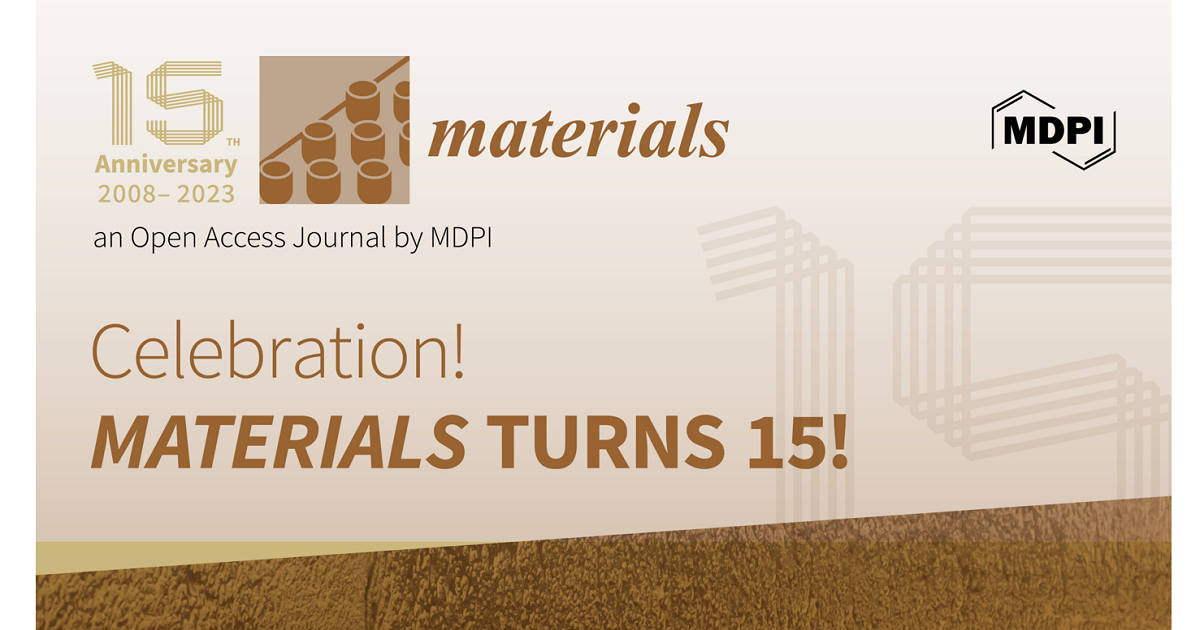The 15th Anniversary of Materials—Recent Advances in Carbon Materials
A special issue of Materials (ISSN 1996-1944). This special issue belongs to the section "Carbon Materials".
Deadline for manuscript submissions: closed (20 February 2024) | Viewed by 3558

Special Issue Editor
Interests: carbon nanotubes; material sciences; nanotechnology; multifunctional materials; nano carbon; biomedical applications
Special Issues, Collections and Topics in MDPI journals
Special Issue Information
Dear Colleagues,
Launched in 2008, for the last 15 years Materials has provided readers with high-quality content edited by active researchers in material science, offering sustainable open access and outstanding editorial services. Today, the published papers receive more than 1,500,000 views per month, with readers in more than 150 countries and regions.
Carbon materials, including fullerene, nanotubes, graphene, onion-like structures and nanodiamonds, have been constantly the focus of worldwide scientific attention. This owes to their exceptional properties, particularly their flexibility in use for a tremendous number of applications. In addition, related materials, such as 2D materials (e.g. transition metal dichalcogenides, hexagonal boron nitride), have been, by now, customarily included in the picture. Last but not least, the preparation and application of composite materials, based on both ceramics and polymeric matrices, including the abovementioned nanomaterials as inclusions, gave new, fresh momentum to the issue of advanced nanomaterials for innovative devices. We welcome original contributions, as well as review papers, in all these areas of research.
Prof. Dr. Stefano Bellucci
Guest Editor
Manuscript Submission Information
Manuscripts should be submitted online at www.mdpi.com by registering and logging in to this website. Once you are registered, click here to go to the submission form. Manuscripts can be submitted until the deadline. All submissions that pass pre-check are peer-reviewed. Accepted papers will be published continuously in the journal (as soon as accepted) and will be listed together on the special issue website. Research articles, review articles as well as short communications are invited. For planned papers, a title and short abstract (about 100 words) can be sent to the Editorial Office for announcement on this website.
Submitted manuscripts should not have been published previously, nor be under consideration for publication elsewhere (except conference proceedings papers). All manuscripts are thoroughly refereed through a single-blind peer-review process. A guide for authors and other relevant information for submission of manuscripts is available on the Instructions for Authors page. Materials is an international peer-reviewed open access semimonthly journal published by MDPI.
Please visit the Instructions for Authors page before submitting a manuscript. The Article Processing Charge (APC) for publication in this open access journal is 2600 CHF (Swiss Francs). Submitted papers should be well formatted and use good English. Authors may use MDPI's English editing service prior to publication or during author revisions.
Keywords
- fullerene
- nanotubes
- graphene
- onion-like structures
- nanodiamonds
- 2D nanomaterials
- transition metal dichalcogenides
- hexagonal boron nitride
- composite materials
Benefits of Publishing in a Special Issue
- Ease of navigation: Grouping papers by topic helps scholars navigate broad scope journals more efficiently.
- Greater discoverability: Special Issues support the reach and impact of scientific research. Articles in Special Issues are more discoverable and cited more frequently.
- Expansion of research network: Special Issues facilitate connections among authors, fostering scientific collaborations.
- External promotion: Articles in Special Issues are often promoted through the journal's social media, increasing their visibility.
- e-Book format: Special Issues with more than 10 articles can be published as dedicated e-books, ensuring wide and rapid dissemination.
Further information on MDPI's Special Issue polices can be found here.






